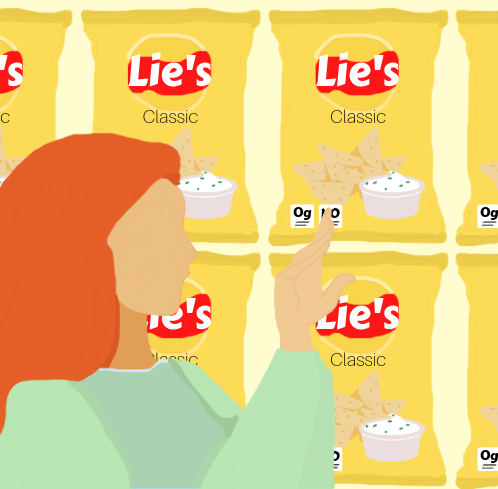I have always wondered why people are warned to be cautious about the ingredients they are shopping for. As many would infer from the words printed in attractively large fonts and colors, something is, in fact, “healthy,” “sugar-free” or “low-cholesterol.” What reason would food corporations have to falsely market their products?
More recently, with food trends praising the healthy diet and consumers emphasizing the detriment of junk foods, corporations sought for consumer perception of their products being healthy, if not actually.
An interesting example is how the McDonald’s fast-food chain introduced salads on its menu in the 1980s after nutrition education–most notably the publication of the first Dietary Guidelines–was foregrounded to the general public and stirred a worse reputation for the chain.
Other leading food companies have made more subtle modifications to their products since then, but lack of transparency with what we are truly eating triggered tension, business-to-consumer.
More items picked off the shelf translate into more revenue. Employing marketing tactics, food products nowadays are transferring to natural, simple ingredients and minimalist packaging to attract the health-conscious millennial. After all, good health is good business.

However, despite these efforts made by food companies, it seems that more effort is put into the label than improving the product itself. As a result, the information presented on the packaging can be misleading to consumers. Here is a quick dive into what this misleading nutrition label may look like:
Companies can conceal harmful additives under a pretense of, say, “Natural Flavor” and another number of listed ingredients difficult to pronounce. As companies need not disclose these additives, this obscurity presents misleading information to the consumer–perpetuating the notion that we are consuming safe ingredients when that is far from the case.
Looking above the list of ingredients is the table of nutrition facts, paid attention to most by consumers. Also, calories–perhaps often perceived to have the most importance in one’s nutrition—is another manipulated number in the food industry.
The Food and Drug Administration (FDA), which regulates the majority of manufactured nutrition labels, noted a surprisingly commodious margin of error with the numbers companies decide to put on these labels: up to 20%. In short, some 300-calorie product could at most be 360, and so on. (However, remember that the number printed largest in the nutrition label may be insufficient in the overall nutritional value of the product—calories are important to be considered, but not the make or break in a diet.)
Not only can the calories in a product be inaccurate, but other nutrition contents are also distorted to uphold the pretense. In fact, 0.5 milligrams of, say, cholesterol in one serving of a product can be rounded to zero as per rounding rules of the FDA. Exploiting this commodity, food companies are quick to write “cholesterol-free” on the front of product packaging. Again, this tactic is also used with other parts of the food label.
Overall, what stands out to me most is how the FDA, which authorizes the nutrition labels before products are on the shelf, openly confirms misleading information to the public, and companies escape scot-free.

So yes; this information is displayed on the Internet with a simple search--accessible to billions of people around the world–but we have yet to do much about it. Despite society advocating healthier food choices and increasing awareness of nutrition, misleading nutrition labels still appear on packaging. This spells a threat to our health and the upkeep of corporate integrity in the food industry while emphasizing why a superficial examination will never address its consequences on consumers.
Stressing an agenda for companies to be more transparent when providing nutritional information, we must ensure that everyone has true access to quality and nutritious ingredients without misleading nutrition labels. But consumers, for now, despite all those large words calling a product healthy, read the fine print.
Otherwise, we would not know what we are eating.

